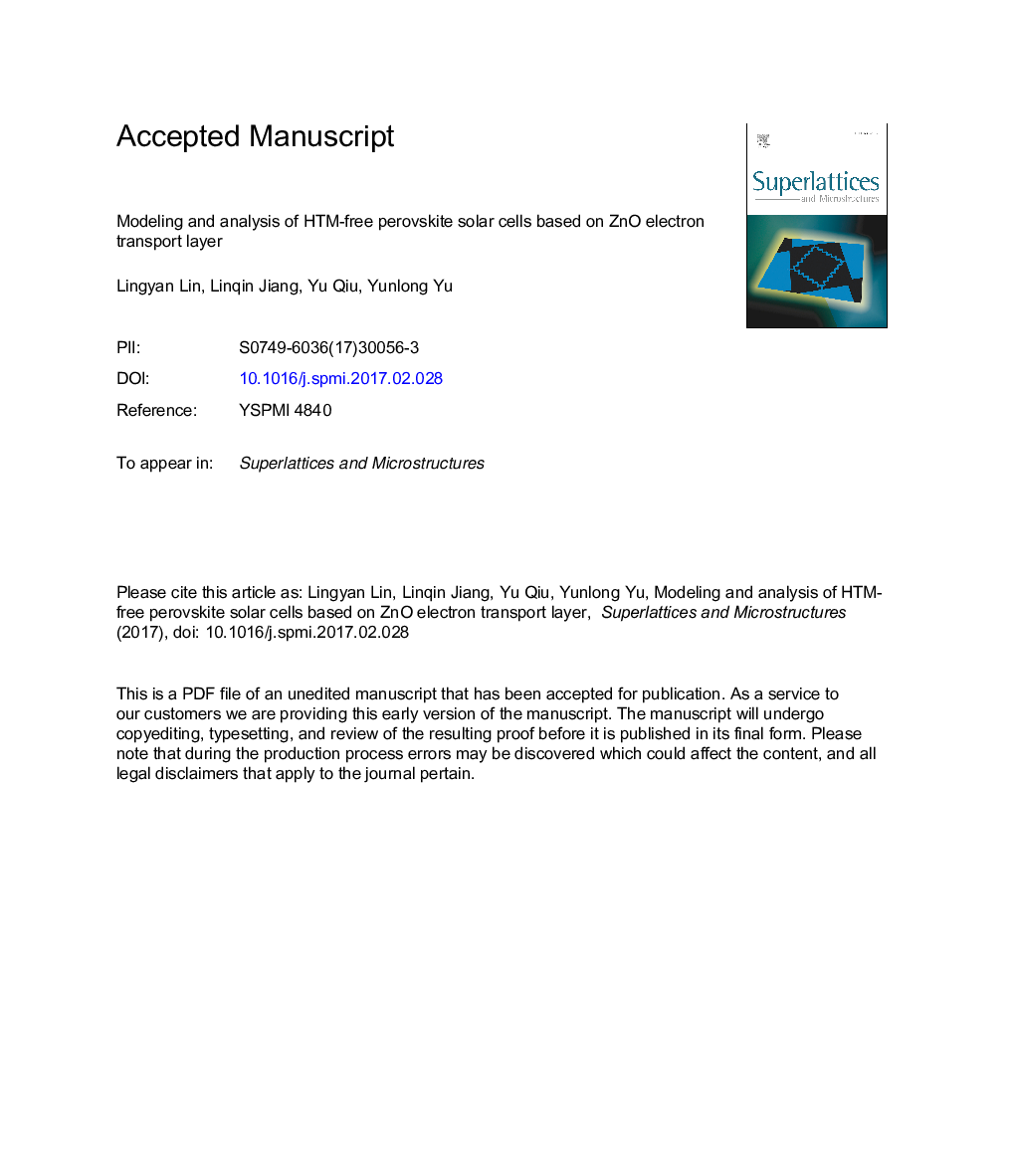| Article ID | Journal | Published Year | Pages | File Type |
|---|---|---|---|---|
| 7940771 | Superlattices and Microstructures | 2017 | 17 Pages |
Abstract
On the road towards high-efficiency and low-cost photovoltaic technology, perovskite solar cells (PSCs) emerge as the most promising candidate. Their application is, however, limited by the expensive hole transport material(HTM) and electrode material (e.g. spiro-OMeTAD and gold) and the high-temperature processed electron transport layer (e.g. TiO2) in the common device structure. In this paper, device modeling of HTM free perovskite solar cells having the structure of FTO/ZnO/CH3NH3PbI3/carbon is performed. Various factors that influence the solar cell performance have been investigated, such as doping concentration and thickness of CH3NH3PbI3 absorber layer, the interface defect density and work function of the back contact (Ï). The reasonable thickness of CH3NH3PbI3 absorber is around 500Â nm. The doping concentrations in the CH3NH3PbI3 layer significantly affect the electron potential barrier height at the junction interface. Meanwhile, to achieve high photovoltaic performance, the defect densities at the CH3NH3PbI3/ZnO interface should be controlled under the order of â¼1017Â cmâ3 by interface modification. Finally, the Ï matching is a requirement to obtain high device performance. We found that an efficiency over 15% can be obtained under the moderate simulation conditions. Moreover, the conversion efficiency of 18.11% can be obtained when the doping concentration of absorber is improved to 1016Â cmâ3. These findings will provide important guidelines for the manufacturing of low-temperature low-cost perovskite solar cells.
Related Topics
Physical Sciences and Engineering
Materials Science
Electronic, Optical and Magnetic Materials
Authors
Lingyan Lin, Linqin Jiang, Yu Qiu, Yunlong Yu,
